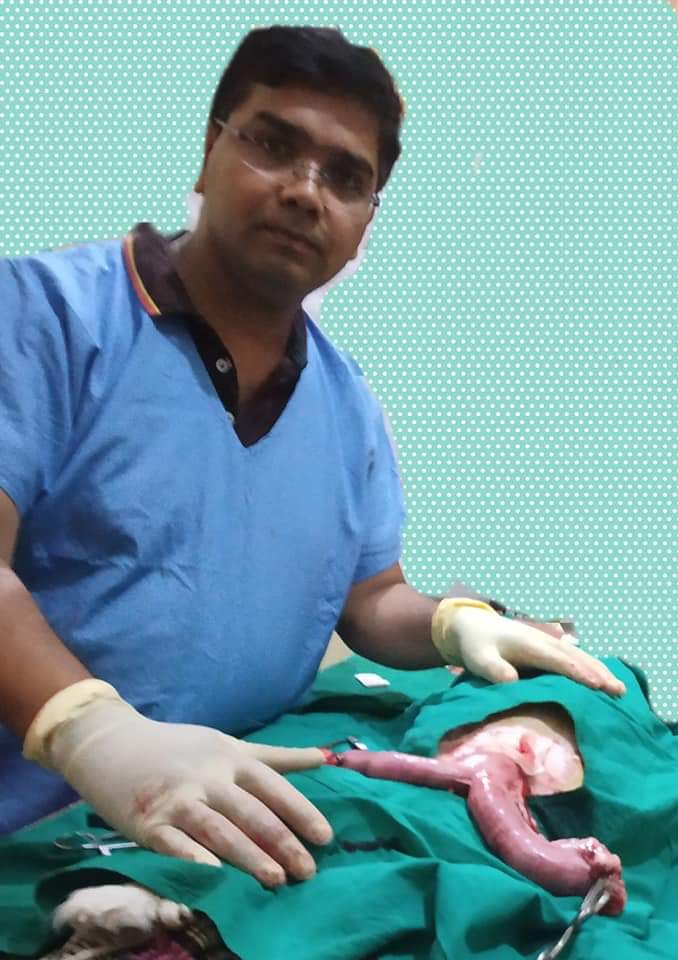By -Dr. Santosh Giri,
Veterinary Officer
Ghazipur, UttarPradesh
7800600112
Pyometra is a secondary infection that occurs as a result of hormonal changes in the female’s reproductive tract. Following estrus (heat), the hormone progesterone remains elevated for up to two months and causes the lining of the uterus to thicken in preparation for pregnancy. If pregnancy does not occur for several consecutive estrus cycles, the uterine lining continues to increase in thickness until cysts form within the uterine tissues (a condition called cystic endometrial hyperplasia). The thickened, cystic lining secretes fluids that create an ideal environment for bacterial growth.
In addition, the muscles of the uterus cannot contract properly either due to thickening of the uterine wall or the high levels of the hormone progesterone. This means that bacteria that enters the uterus and fluids that have accumulated cannot be expelled.
During estrus, white blood cells, which would normally protect against infection by eliminating bacteria, are inhibited from entering the uterus. This normal occurrence allows sperm to safely enter the female’s reproductive tract without being damaged or destroyed by these immune system cells.
The combination of these three factors can often lead to life threatening infection.
“Pyometra usually occurs two to eight weeks after the last estrus.”
What are the clinical signs of pyometra?
The clinical signs depend on whether or not the cervix remains open. If it is open, pus will drain from the uterus through the vagina to the outside. Pus or an abnormal discharge is often seen on the skin or hair under the tail or on bedding and furniture where the dog has recently laid. Fever, lethargy, anorexia, and depression may or may not be present.
If the cervix is closed, pus that forms is not able to drain to the outside. It collects in the uterus ultimately causing the abdomen to distend. The bacteria release toxins that are absorbed into the bloodstream. Dogs with closed pyometra become severely ill very rapidly. They are anorectic, very listless and very depressed. Vomiting or diarrhea may also be present.
How is pyometra diagnosed?
Dogs that are examined early in the course of the disease may have a slight vaginal discharge and show no other signs of illness. However, most dogs with pyometra are seen later in the illness. A very ill female dog with a history of recent heat that is drinking an increased amount of water should be suspected of having pyometra. This is especially true if there is a vaginal discharge or a painful, enlarged abdomen.
“A very ill female dog with a history of recent heat that is drinking an increased amount of water should be suspected of having pyometra.”
If the cervix is closed, radiographs (X-rays) of the abdomen will often identify the enlarged uterus. If the cervix is open, there will often be such minimal uterine enlargement that the radiograph will be inconclusive.
How is pyometra treated?
The preferred treatment is to surgically remove the infected uterus and ovaries by performing an ovariohysterectomy (spay). Dogs diagnosed in the early stage of the disease are very good surgical candidates. The surgery is somewhat more complicated than a routine spay at this stage. However, most dogs are diagnosed with pyometra when they are quite ill resulting in a more complicated surgical procedure and a longer period of hospitalization. Intravenous fluids are required to stabilize the dog before and after surgery. Antibiotics are usually given for two weeks after surgery.
What happens if I don’t treat my dog?
The chance of successful resolution without surgery or prostaglandin treatment is extremely low. If treatment is not performed quickly, the toxic effects from the bacteria will be fatal in many cases. If the cervix is closed, it is possible for the uterus to rupture, spilling the infection into the abdominal cavity. This will also be fatal. Pyometra is a serious medical condition that requires prompt treatment.
NB-Ovariohysterectomy is the sole treatment for pyometra.
However treatment with PGF2a helps in drainage of pus but has adverse reactions of nausea, emesis and muscular weakness.
Oral Enrofloxacin for few weeks also controls endometritis along with antacids.


